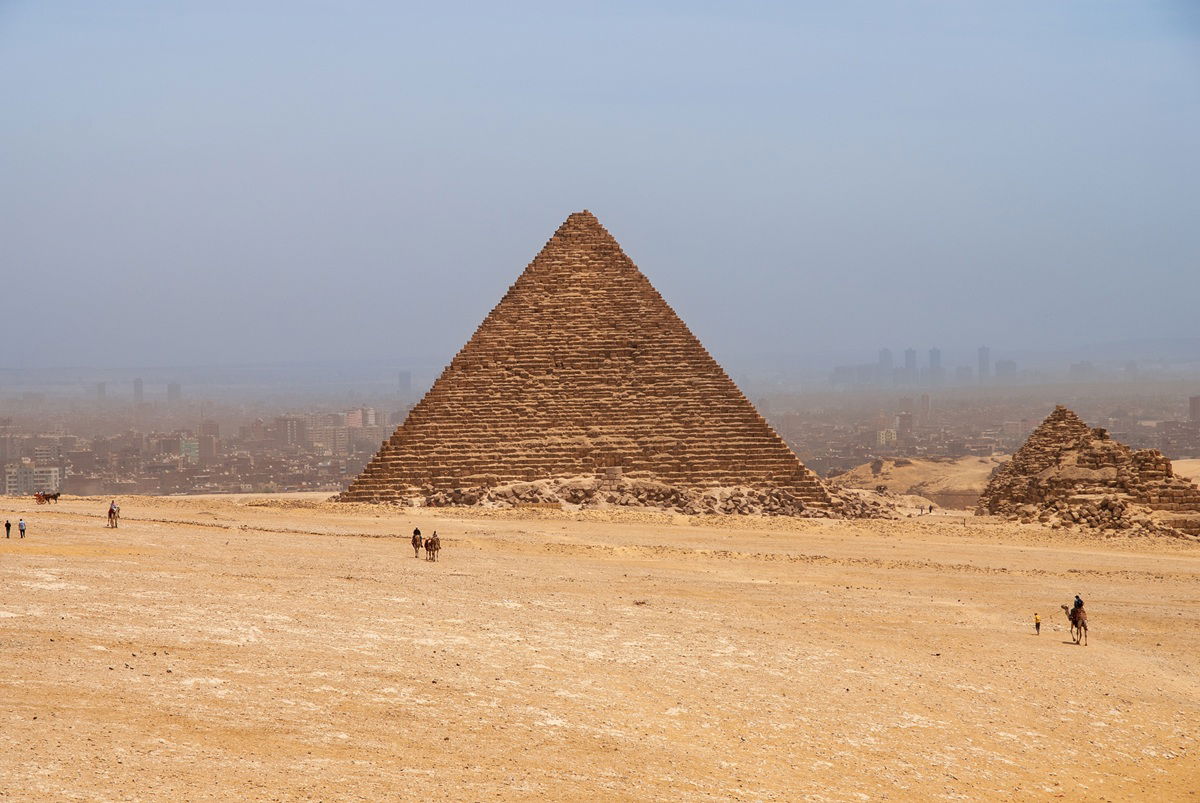The Pyramid of Menkaure, the smallest of the three Great Pyramids at Giza, still holds many secrets. Credit: Marinodenisenko, Shutterstock
It seems that the Pyramids of Giza have not yet revealed all their secrets. An Egyptian and German research team has discovered two hidden air-filled cavities inside the Pyramid of Menkaure, the smallest of the three great pyramids, raising new hopes and questions about the existence of a secret entrance that has been sealed for more than 4,500 years.
The discovery, announced by scientists from Cairo University and the Technical University of Munich (TUM), is part of the ambitious ScanPyramids project, which uses advanced scanning techniques to explore the interiors of ancient Egyptian ruins without causing damage.
They say the discovery adds strong evidence to a long-standing theory among archaeologists that Menkaure’s pyramid may have a second hidden entrance, buried behind stones for thousands of years.
clue carved in stone
The story begins with an interesting detail on the eastern face of the pyramid. It is part of a block of perfectly polished granite, approximately 4 meters high and 6 meters wide. The unusual smoothness of the stone attracted the attention of experts many years ago, as this type of finish is usually only found near the northern facade.
This detail led independent researcher Stein van den Hoven to suggest in 2019 that the granite patch could be hiding something important, possibly another entrance built between 2490 and 2472 BC, during the reign of King Menkaure.
Now, five years later, cutting-edge scanning tools are providing new support for that idea. Using ground-penetrating radar (GPR), ultrasonic testing (UST), and electrical resistivity tomography (ERT), the research team detected two cavities just behind the mysterious granite surface.
According to the data, the first cavity (labeled A1) is located approximately 1.4 meters below the surface and measures approximately 1 meter by 1.5 meters. The second, A2, is slightly smaller at 0.9 x 0.7 meters and approximately 1.13 meters deep.
“These tests allow us to find out what is happening inside the pyramid without touching any of the stones,” explained Professor Christian Gross of TUM. “And what we found makes the idea of another entrance very plausible.”
pyramid standing apart
The Pyramid of Menkaure is the smallest of the three pyramids at Giza, at around 60 meters high, but it is also the least changed since its construction during the Old Kingdom. That’s why the site is so valuable to researchers, offering a relatively untouched window into ancient Egyptian engineering.
If there really is a hidden entrance on the east side, it would challenge what we know about the pyramid’s design. Most tomb entrances at that time were built facing north rather than east.
“This is a very interesting discovery,” said Peter der Manuellian, an Egyptologist at Harvard University who was not involved in the project. “It reminds us that there is still much to learn about the Pyramids of Giza.”
This discovery highlights how far the ScanPyramids team has come in recent years. In 2023, the same group uncovered a previously unknown corridor inside the Great Pyramid of Khufu, another major breakthrough that captured the world’s attention.
Uncover the past with modern tools
The ScanPyramids project, led by Cairo University and the Egyptian Ministry of Tourism and Antiquities, combines archeology and cutting-edge technology to safely explore ancient monuments. This work is supported by the Supreme Council of Archeology, Dassault Systèmes, NHK, and several universities and research institutes.
The researchers say the discovery is promising, but caution that more research is needed to confirm what these cavities actually mean. They could be structural gaps, hidden rooms, or, as many now suspect, the beginnings of forgotten passageways.
For now, the mystery remains. But one thing is for sure: the discovery has reignited fascination with the Pyramid of Menkaure, a monument that still protects its secrets thousands of years later.








